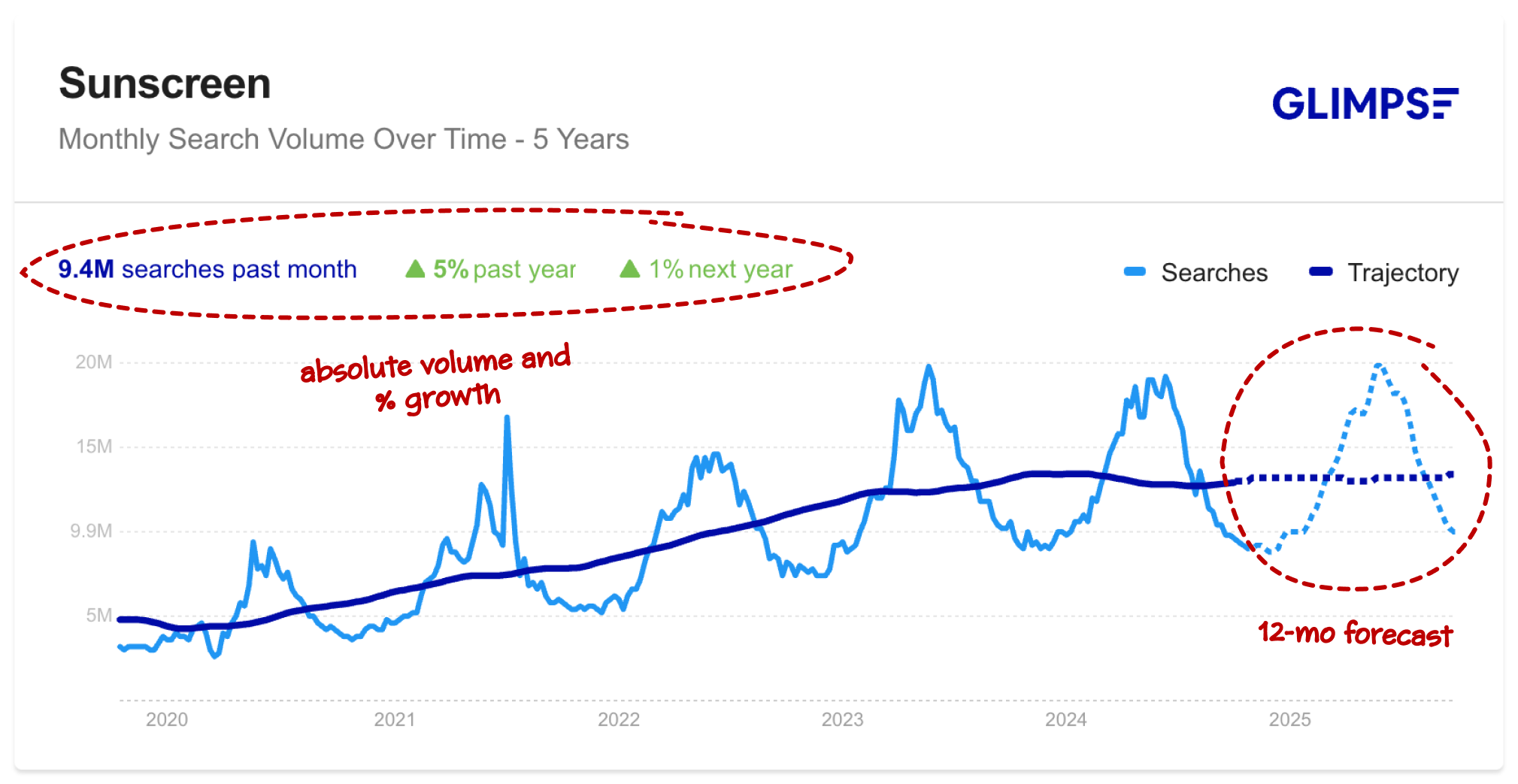Google Trends Interest over time section is arguably the core feature of the tool. Learn what it means, how it's measured, and how to use it in this guide.
Understanding relative interest
The most important thing to understand when interpreting Google Trends data is the concept of relative interest. After searching a keyword in Google Trends, you'll see that the Y-axis uses a scale of 0 to 100.

This does not reflect the number of times that keyword was searched. Rather, it's measuring relative interest.
In relative terms, 100 represents the peak popularity of the search term during that period, 50 represents half that interest, and 0 indicates insufficient data. Google calculates this by dividing a term's search count by the total searches in the selected geography and time range, and the results are highly accurate.
However, while this approach enables consistent comparisons over time even as overall search volumes fluctuate, it makes it practically impossible to grasp the size of a topic.
Glimpse, an extension that enhances Google Trends, solves this by replacing relative search interest with accurate absolute search volume data. This allows you to instantly grasp the size of a topic, its rate of growth, and an (optional) 12-month forecast.

Adjusting parameters
By default, Google Trends shows results for the country you're searching from. However, you can adjust this to show results in any region at the level of country, state, or even city.
Google also defaults the time frame to the past day, but you can change this to view interest over a longer or shorter period, going as far back as 2004 or as recently as the past hour.
In addition to pulling insights from a single search term, you can compare up to five different terms, revealing how their popularity trends against each other.
While a relatively simple graph, you can use Interest over time to pull unique insights, including understanding seasonal variations, long-term trajectories, peak interest, and more. This data is valuable in a range of applications, from SEO and eCommerce to even trading and investing.